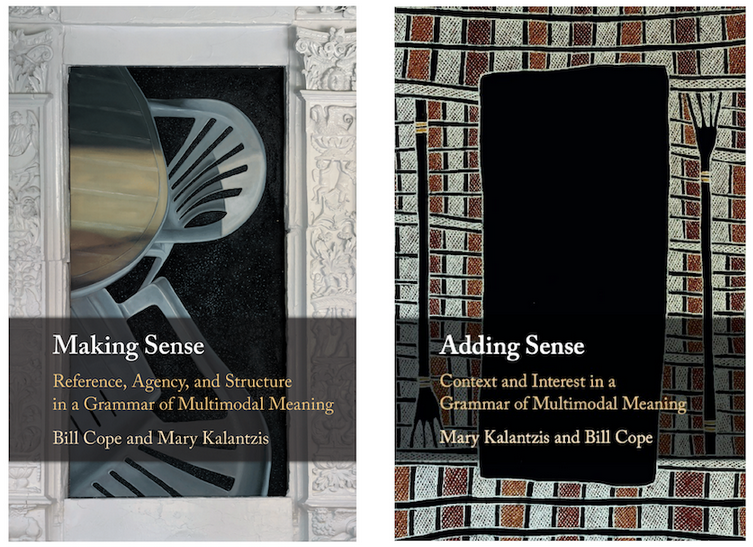Meaning Patterns’s Updates
Review of "Making Sense" and "Adding Sense" by Qinhong Wei
Making Sense (MS) and its companion volume, Adding Sense (AS), is a grammar of multimodal meaning. In this grammar of multimodality, meaning is seen as part of our life in what we see, hear, understand or express...
[T]he most striking feature of this grammar lies in its “transposition”, a novel idea about the patterns in the movement of meaning emerging from digital communication... [I[nstead of using the traditional static understandings of grammar as the lexis and syntax of language, the authors have expanded the definition of grammar and developed a new functional theory of meaning that can be applied across all forms of meaning or a multimodal combination of them...
The grammar of multimodality follows the Hallidayan tradition to probe into the possibilities of multimodal meaning in digital communication, but it has gone beyond the conventional frames of linguistics and language-centered theories of meaning. It is the first systematic framework for describing and analyzing different forms of meaning across text, image, space, object, body, sound, and speech... Compared with traditional grammars of language, this grammar is a more widely encompassing theoretical framework which can talk about meaning at a broader level of generality...
Unlike the traditional approach to discourse analysis, this grammar does not freeze a meaning in time and place, but traces and describes the patterns of movement in meaning across all meaning forms, which is the principal innovation of this grammar since meanings are constantly on the move in current digital and multimodal communicative surroundings. This is the reason why this grammar is also called “Transpositional Grammar,” ...a new social semiotic theory of meaning which can account for broader meaning-making activities across a range of disciplines in the times of digital technology and multi-media...
To mean is also to act. And to parse is in order to change. Therefore, the implications of these two companion books are significant since the purpose of parsing is to make sense of the play of solidarity and antagonistic interests in our social lives. As the authors say at the beginning of these two books, the grammar of multimodality is not just a grammar to parse sentences, but one “to parse a world beyond the text” (p. 1, MS).
- Extracts from: Wei, Qinhong, "Book Review: Bill Cope and Mary Kalantzis, ‘Making Sense: Reference, Agency and Structure in a Grammar of Multimodal Meaning,’ and Mary Kalantzis and Bill Cope, ‘Adding Sense: Context and Interest in a Grammar of Multimodal Meaning’,” Discourse Studies, 24(1):143-45, 2022, doi: https://doi.org/10.1177/14614456211073219d.
- Previous reviews: John R. Bateman, Fei Victor Lim, and Sole Alba Zollo


